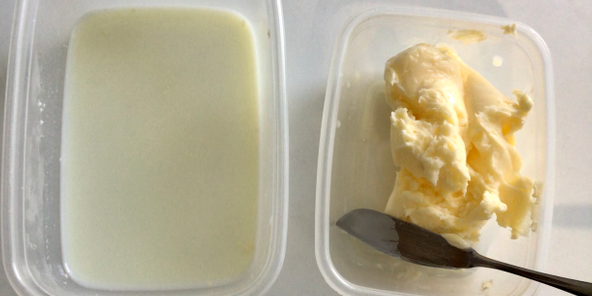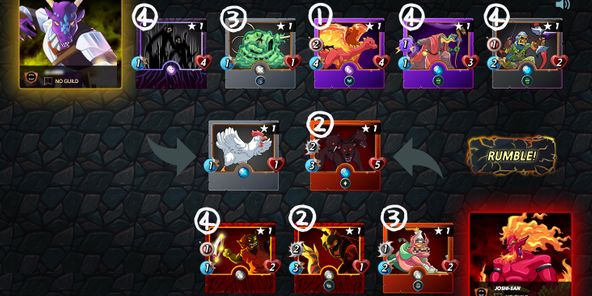

承知しております。ALISISTAの99%の人が興味ないであろう、英語の文章を読んだり書いたりするときの話をします。参考書読んでて、よく「:」とか「;」 出てくるのでまとめておこうかと。。。
知ってる、使えると便利!
結局、なんとなく文脈理解できるから流してしまいがちなこれらの句読点。これらがいつ使われるかを知ると、読むときにめちゃくちゃスムーズに言葉が入ってきます。さらに、書くときにより伝えたいニュアンスをうまく表現できるようになります。
例えば下のような感じです。
「:」コロンの例:
第3回宇宙飛行士候補者選抜試験受験者の572人のうち、採用されたのはたった一人でした。野口総一さんです。
Of the 572 third astronaut candidate selection test takers, only one was recruited: Soichi Noguchi.
「;」セミコロンの例:
見かけによらず、人々はそれぞれ悩み事を抱えているものだ。昨日、できすぎ君が僕のあの道具をお願いしてきた。
People, regardless of appearance, have their own worries; yesterday, Dekisugi-kun asked me for that tool.
「—」ダッシュの例:
女の子にモテたければ大事になってくるのが、今となっては当たり前な清潔感と、自分への自信だよね。
If you want to be popular among girls, the most important things are the cleanliness—it is common these days— and the self-confidence for yourself.
それぞれの句読点「,」「:」「;」「—」について、ほとんどの記事が日本語の用語での分類に重きを置きすぎているため、例文が豊富じゃありません。
これだと最終的には日本語で説明された用語しか頭に残りません。もちろん一旦概念的に理解することは大事ですけど、用語を思い出して「あの用法だったからこの場合は・・・」と考えるのは煩わしい。
ここでは実際に a)英語の本や論文、新聞を読んでいるとき、「この文脈でこの句読点が来たらこういう意味だな」というのと、b)英語で文章を書くときに「こういうニュアンスはこの句読点使えばいいんだな」というのを、より感覚的に理解できるように、できる限り分かりやすく説明します。
こういう使い分けが重要になるのは割とかっちりした文章なので例文も少しだけ難しいです。が、説明の後の例文は、出来るだけ英文だけで理解しようとしてみてください!
目次
1. いつ「,」コンマ(comma)を使うか
2. いつ「:」コロン(colon)を使うか
3. いつ「;」セミコロン(semicolon)を使うか
4. いつ「—」ダッシュ(dash)を使うか
1. いつ「,」コンマ(comma)を使うか

コンマは句読点の中でも、一番使用率が高く、それゆえに乱用されてしまう側面もあります。それは偏に、コンマには様々な用法があって使い勝手が良すぎるから。ここでは、特に重要な役割に絞ってみていきましょう。コンマの主な用法は、接続、導入、挿入です。
・物事や、短いフレーズを列挙するとき:
I bought bread, cheese, and pickles at the grocery store.
・独立した二つの長い節を区切って、接続詞(and, but, or, norなど)でつなげるとき:
Astronomers have known about the positions of stars for centuries, but they didn’t understand that the earth revolves around the sun.
・導入フレーズの後:
In preparation for the next convention, the representatives studied up on the most important issues.
・説明的フレーズを挿入するとき:
All doctors, if they care about their patients, are concerned with good office hygiene.
コンマのよくある間違い
・コンマによる接続:
Incorrect: Thousands of protesters showed up on the streets, they were shouting and carrying large posters.
Correct: Thousands of protesters showed up on the streets; they were shouting and carrying large posters.
(※接続詞なしでは、コンマで別々の節をつなげることはできない)
・長いフレーズの統合:
Incorrect: Some useful subjects are English, which is an international language, math, which is used in all domains of sciences and social sciences, and philosophy, which underpins many other areas of study.
Correct: Some useful subjects are English, which is an international language; math, which is used in all sciences and social sciences; and philosophy, which underpins many other areas of study.
(※説明的フレーズをコンマと使うときや、長い節をコンマで区切ると見づらくなるので、セミコロンを使います)
2. いつ「:」コロン(colon)を使うか

コロンは列挙や、「こういう意図で言ってます」ということを読者に伝えるために使われます。ほとんどの英語の文章において、列挙をするため以外にはコロンは多用されません。コロンを使うためのルールは決まっていますが、心配するほど難しくはありません。コロンの主な用法は、例示、説明です。
・物事を例示するとき:
Humans use five major senses: sight, hearing, smell, taste, and touch.
・独立した二つの節を区切るが、二つ目の節が一つ目の節について説明、言い換え、拡張している場合:
Martha realized that her worst fear was coming true: her son was being sent to war.
(※コロンの後は、Martha's fearを説明する独立した節となっている)
Of the 572 third astronaut candidate selection test takers, only one was recruited: Soichi Noguchi.
(※コロンの後は、only oneの言い換えになっている)
・ビジネスメールやフォーマルな手紙の挨拶の後ろ:
To the Central Valley Committee Chairman:
コロンの活用法
・固有名詞、引用の一部、複数の文の初めでない限りは、大文字を使わない:
Incorrect: I have three desires: To eat, sleep, and work.
Correct: I have three desires: to eat, sleep, and work.
・引用が複数の文を含むとき、コンマよりもコロンの方が好まれて使われる:
In Chapter 3, the author explains his theory: “Dogs have dreams, but they don’t dream as humans do. Their dreams reflect a primal desire for pleasure, whereas humans are preoccupied with the ego and self-image. This is equally true in wakefulness and sleep.”
・必ずしも完全な文章が続く必要はない—単語やフレーズでも大丈夫
There is one mantra that can sum up our position towards climate change: urgent action.
コロンのよくある間違い
・同等または独立した情報をもつ二つの節を区切る:
Incorrect: Sarah and her friends loved spending time on the mountain: nature always held a special meaning for them.
Correct: Sarah and her friends loved spending time on the mountain; nature always held a special meaning for them.
(※全く関係のない文章であれば、ピリオドを使います。二つの情報が何らかの関係がある程度で、二つ目の節が一つ目の節の説明、言い換えをしていない場合は、セミコロンを使います)
3. いつ「;」セミコロン(semicolon)を使うか

セミコロンは、関係性をもつ二つの意見(独立した二つの節)を区切るために使います。コンマが間に使われていてより複雑な意見やフレーズを列挙するときにも使われます。本質的には、セミコロンは意味付け要素をもつコンマ、あるいは、柔軟性のあるコロンといったところでしょうか。セミコロンの主な用法は、接続です。
・同等の位置付けや同格の複数の意見をつなげるとき:
The universe has always called to human beings; there could be no more final frontier than space.
・接続副詞(however, therefore, moreover など)や移行フレーズによって、独立する二つの節をつなげるとき:
Sam thought David was inviting him to the picnic to enjoy a nice day out; as it turned out, David was planning a surprise birthday party.
・それぞれの項目の間にすでにコンマがあるか、項目が比較的長く複雑である場合に、それらを列挙するとき:
Our family members came all the way from Denver, Colorado; Rochester, Minnesota; and even Paris, France.
・独立する複数の節を接続詞(中にある節同士がすでにコンマで区切られている場合)で区切るか、節が長い場合に区切るとき:
My main research objective is to isolate the cause of the disease, as well as to contribute to the existing literature; for this will bring an end to starvation across the continent, create new study designs related to epidemiology, and change the very paradigm of my research field.
セミコロンのよくある間違い
・セミコロンであるべきところでコンマを使う
Incorrect: The specimens were treated properly, however, they were not stored properly.
Correct: The specimens were treated properly; however, they were not stored properly.
(※接続副詞である”however”は独立する二つの節をつなげている;接続詞(and, but, or, norなど)がないところでは、コンマを使って独立する二つの節をつなぐことはできない)
・コンマだけを使う
Incorrect: The sun is wonderful: it produces light, which plants need to survive, it gives us warmth, which is useful for most life, and it makes a sad day happier, which is obviously a positive trait!
Correct: The sun is wonderful: it produces light, which plants need to survive; it gives us warmth, which is useful for most life; and it makes a sad day happier, which is obviously a positive trait!
(※コンマだけでは列挙されているのが何なのかはっきりしないことがあるため、ここでセミコロンを使って分類をしやすくできる)
4. いつ「—」ダッシュ(dash)を使うか

ダッシュ(特には、emダッシュ)は最も多目的な句読点といえるでしょう。しかし、コンマと同様、うまく利用されてないことが多いです。ダッシュは、コンマや丸括弧、コロンと似たような働きをしますが、また少し違った意味合いを加えます。
・コンマの代わりに使うとき
補足説明や挿入フレーズにおいて、コンマの代わりにダッシュを使うことができます。特殊な記号の中で述べられていることに読者を注目させることができるので、ダッシュの方が少しだけ強調されます。
・コンマを使った補足説明フレーズ:
And so, when the baby was born in June, nearly two months premature, the parents were happy but quite nervous, and they still had to buy all of the baby supplies.
・ダッシュを使った補足説明フレーズ:
And so, when the baby was born in June—nearly two months premature—the parents were happy but quite nervous, and they still had to buy all of the baby supplies.
(※ダッシュによって赤ちゃんがまだ未熟であることを強調し、それが重要な詳細情報であることを示しています。)
・丸括弧の代わりに使うとき
ダッシュはあまりフォーマルではないため、学術的な文章で目にすることは丸括弧に比べて少ないかもしれません。しかし、明確な挿入により、強調して目を引くことができます。
丸括弧の代わりにダッシュを使うときは、それらを囲む句読点は省きます:
・丸括弧:After taking all of his final exams (including seven essays and three multiple choice tests), David just wanted to sleep.
・ダッシュ:After taking all of his final exams—including seven essays and three multiple choice tests—David just wanted to sleep.
(※ダッシュの方がより目を引くので、分の流れをより明確に断ち切り挿入部分に注目を集めることができます)
文末で丸括弧の代わりにダッシュを使用するときはダッシュは一つだけ使います:
・丸括弧:That coffee shop offers a selection of exotic gourmet coffee (or at least that is how they describe it).
・シングルダッシュ:That coffee shop offers a selection of exotic gourmet coffee—or at least that is how they describe it.
(※文末にダッシュが置かれるときは非常に効果を持ちます—文章に補遺が付くように延長します)
・コロンの代わりに使うとき
コロンで示している文の結論を強調したい場合に、コロンの代わりにダッシュが使われます。ダッシュは追加情報をより柔軟的な方法で載せることができますが、コロンよりはフォーマルではありません。
・コロン:The executives finally decided what they would do with the company: sell it at a loss.
・シングルダッシュ:The executives finally decided what they would do with the company—sell it at a loss.
・コロン:Let’s go where we went last year: Disneyland!
・シングルダッシュ:Let’s go where we went last year—Disneyland!
(※この方法でダッシュを使用すると、予想(または避けられない)の感覚が伝わり、文章により筆者の感覚を加えることができます)
その界隈で使われている表現を使うのがベスト
文章を書く際は、その読者だったりその文書の背景を考慮することは役立ちます。そういう意味では、先行論文だったり参考書に書いてあるのを真似してみるのが一番いいです。新聞や雑誌、刊行物を書く際も同じことが言えるでしょう。
下のリンクには句読点について、非常に細かく書いてありますので興味がある方は。

投稿者の人気記事




バターをつくってみた

梅雨の京都八瀬・瑠璃光院はしっとり濃い新緑の世界

【初心者向け】Splinterlandsの遊び方【BCG】

17万円のPCでTwitterやってるのはもったいないのでETHマイニングを始めた話

機械学習を体験してみよう!(難易度低)

約2年間ブロックチェ-ンゲームをして

SASUKEオーディションに出た時の話

警察官が一人で戦ったらどのくらいの強さなの?『柔道編』 【元警察官が本音で回答】

オランダ人が語る大麻大国のオランダ

京都のきーひん、神戸のこーへん

ジョークコインとして出発したDogecoin(ドージコイン)の誕生から現在まで。注目される非証券性🐶
